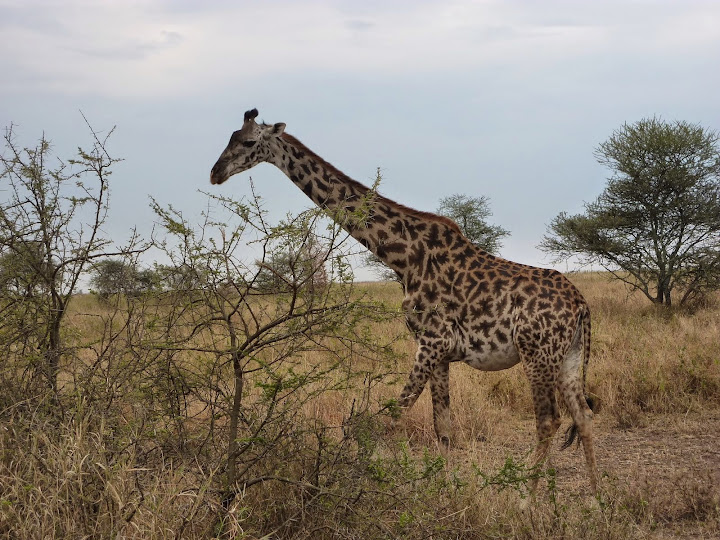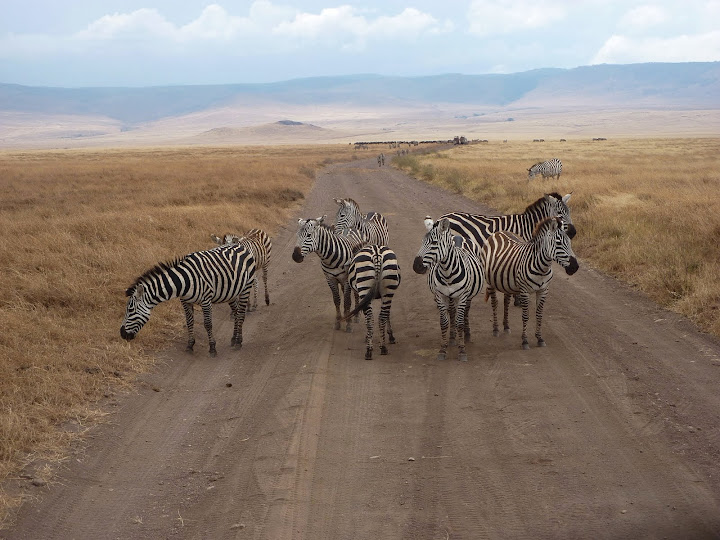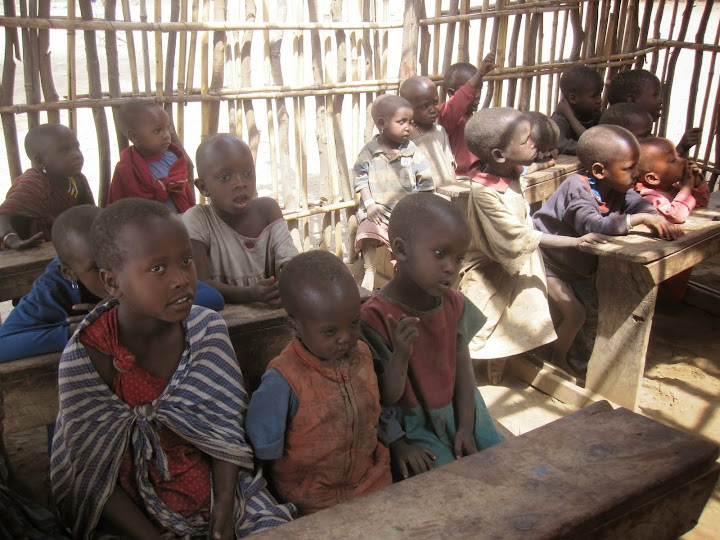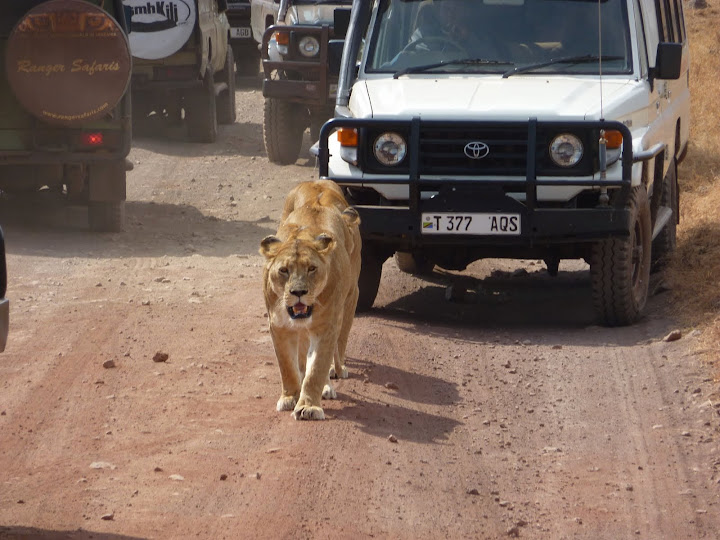Through the Eyes of an Educator: East African Safaris (Tanzania & Kenya)
I had no idea that I wanted to be a teacher when I graduated university. Law school was an option, fundraising at not-for-profits was a consideration, event planner was possible, and swim instructor was definite, but teacher was never in the mix. Now, after teaching and advising for over fifteen years in a Long Island, New York public high school, I find myself in search of new ways to both learn and teach. World travel has opened so many doors for me, and I wish for it to do the same for others. Today, I continue to see multiple learning styles but cringe, as the educational system seems to move away from multiple teaching styles. So many who I’ve come to interact with in the educational world concur. Whether you’re world schooling, unschooling, homeschooling, or supplementing the traditional, it’s obvious that all students learn differently and even more obvious that learning by doing is key.
I remember the first time my husband took me to see the Little Penguins in Phillip Island, Australia. At dusk, onlookers sat on bleachers watching the water, waiting to see the heads of penguins pop out of the sea and watching as they waddled back up the beach to their awaiting burrows. I remember those amazing moments and thinking that it was wonderful that we were guests of the penguins and not the other way around. We were the visitors and the animals the instructors. Nature was the teacher and the experience memorable.
In August of 2012, my husband and I spent two weeks in East Africa on a gAdventures trip. Having traveled some of northern, western and southern Africa at an earlier time, we didn’t know what to expect from this new region but excitement and curiosity was palpable. We spent time on the spice island of Zanzibar and on safari through the Serengeti and Ngorongoro Crater, eventually crossing the border to our final stop: Nairobi, Kenya. We’d prepared for this travel, gotten our visas in advance, had taken as many medical precautions as possible and now we were ready for an out of the box educational experience that could only be offered by nature.
After a few days on the beautiful Indian Ocean beaches of Zanzibar, we made our way back to Dar Es Salaam to hop aboard our overland truck that would take us through the wilds of East Africa. We’d been on game drives in southern and western Africa, but we quickly realized that East Africa is different.
Tanzania is one of the world’s poorest countries, holding one of the highest rates of tourism in Africa. Amidst the poverty, there is rare beauty. Tanzanite, a beautiful blue stone considered rarer than diamonds, is mined in only four mines in the entire nation and will soon be extinct.

In this country filled with national parks, astounding scenery, and thousands of people, nature is the biggest draw. Red banana trees line the streets in parts of the country. Tribal cultures are ever-present, teaching their young the ways of nature through herding cattle and using all elements of the land for their housing. Camping is eco friendly, huge for tourism and one of the best ways to get up close and personal to animals, local people, and the snow-capped peaks of Kilimanjaro.

Our clothing consisted of beige, tan, and khaki so as not to bother the tsetse flies. Binoculars were at the ready, along with camera lenses and scarves/pashminas kept the beautiful red dirt out of our eyes and noses. I’m not sure it matters if you’re a novice or expert game drive attendee, when a male lion is sitting on the side of the road adjacent to the truck, all eyes open wide, mouths shut tight, and awe envelops the truck.
The road to the Serengeti (or Endless Plain) is incredibly bumpy, giving even more credence to the 4x4s in which we drove. As we rode, the colours of the landscape continued to change. Being the dry season, the vista is more brown and yellow than green, and the rivers are mostly dry, although the riverbeds themselves remain green from the moisture. Due to its immense size, there were times when we could drive for kilometers with nothing but landscape in front of us - but in an instant, animals would flood the view. Elephants, giraffes, gazelles, zebras, lions, and cheetahs of all ages and sizes are here. We’d be stopped for extended periods of time due to street traffic of zebra or elephant crossing, and often come face to face with wildebeests on the side of the roads. If you visit during the migration, there are droves and droves of animals. On either side of the migration, there are those still on the move and those yet to begin-no matter when, they’re here. We are guests in their home and that is a precious gift. The scene that nature paints is truly beautiful.

Our journey through Tanzania continued. We found squat toilets in abundance with a few western toilets available at certain rest stops (hint: always carry baby wipes or your own toilet paper). We learned to check for snakes and scorpions upon opening and closing our tents and to reapply copious amounts of bug spray often to clothing, tents, and ourselves.
Sleeping on the edge of Ngorongoro Crater, tucked safely in our tents with our warm Masai blankets, we could see the sparkle of the stars in the dark night sky through the mesh of the door flap. Entering the crater was a vivid scene out of The Lion King. It would not surprise me if Rafiki (friend in Swahili) walked right up to the truck to knock us on the head with his stick, or if Timon and Pumba came tumbling out from behind one of the many boulders. This is the land of Simba (lion in Swahili). Never before have I felt such closeness to a Disney movie as if Mary Poppins had actually allowed me to pop into the chalk drawing and here I am.
The roads ahead are deep red or burnt sienna colour from the Crayola box. Surrounding the roads are yellows and beige and orange patches with green grass where the rivers once stood and will return again in the wet season. Since the crater is smaller than the entire Serengeti, it feels as if animals are everywhere. The wildebeest with their long, sad faces come in herds. They rarely migrate to Kenya’s Masai Mara, so they are here in large number at this time of year.

The Maasai tribal community is known in this region. These nomadic people who travel with their family and cattle widely reside in the region closely associated with the border of Kenya and Tanzania. We were privileged to meet some members of the tribe who showed us traditional dances, jewelry made from natural objects, and gave us a look inside community homes. When the Maasai need to move homes, they leave the dwellings fully intact for the next set of nomads. Houses are made out of cow dung, elephant grass and the hardwood of acacia trees. The homes traditionally have two rooms. One is for the mother and the children and often has one bed and a small area for kitchen equipment and the second room is for the father.

Starting school at a young age, children are taught within their tribe. Amidst the houses there is a school building. Children learn reading, writing, maths, singing, history, and more. Many Maasai children marry by age eighteen. One of the young men with whom we spoke was attending university in one of the nearby cities and came home to his family as often as possible. This tight knit community thrives off the land and communes with both nature and animals. At a very young age, children learn the ways of nature and how to herd cattle that often live in very close proximity to the houses. The name of the Ngorongoro Crater was named for the sounds made by the bells found around the necks of Masai cows. The community is very closely linked to this part of Eastern Africa.

Here, nature is our classroom and the animals our teachers. Each has his/her own job but together they share responsibilities. For example: birds sit on the buffalo and eat the parasites out of their eyes. Elephants can send out a signal to other animals (to let them know of approaching danger) through the thud of their feet. Stripes on a zebra look blurry when they run as a herd so lions can’t see just one on which to pounce. Nature is amazing. We sat, motionless for what seemed like hours, watching in awe as the lions and lioness snuck through the tall reeds waiting to pounce on nearing prey of unknowing gazelles and kind-eyed zebras. This is the real world Survivor, and no matter how it may tug at my vegetarian heartstrings, the food chain is in effect and only the strong actually survive.
We learned many things about the animals in the wild. In our search for the Big Five (lion, leopard, rhino, buffalo, and elephant), we learned of the Little Five located in East Africa. There’s the ant lion, the rhino beetle, the elephant shrew, the leopard tortoise, and the buffalo weevil. Along with these, those in the area have also named the Ugly Five. There’s the Maribu Stork (which stands almost as tall as me), the warthog, hyena, wildebeest, and vulture (who swooped down and swiped food from our hands in the middle of a picnic lunch under an acacia tree). We even got to see the elusive honey badger. This tiny and fierce animal has been known to take down a buffalo all on its own. We were told that elephants are vegetarians and the difference of the genders of ostrich. The male ostrich is black and white, while the female is brown. During mating season, the neck of the female ostrich turns pink. And most significantly for those in search of the Big Five, when looking for a leopard, all trees are suspect!

Trucks often radio each other when there are animals near the paths. Following news of a lion sighting, we turned down a path and had to stop short. Directly ahead on the path were two lionesses with their heads held high just wandering on a journey to who knows where. Their body language shouted ‘I’m walkin’ here’ and their eyes said ‘remember, you’re a guest in these parts.’ The entire truck held their collective breath. This was it! They are the reason so many are here. This is the moment captured on film that can be retold and reminisced often.

Driving north from Arusha to the border of Kenya, the brilliance of Mt. Kilimanjaro loomed in the distance. Luckily, the clouds parted just in time, and we caught a glimpse of the sheer magnitude of Kilimanjaro. Choosing not to let time take over, we stopped on the side of the road, photographed away, and watched the sunrise from the side of the road. As the sky changed colours, we got to greet the day in the sightline of one nature’s treasures, having breakfast and roasting marshmallows for s’mores off the side of the truck. Nothing could have made this moment better!

We left Long Beach, New York in the middle of the summer in search of animals, landscape, and adventure. We returned with endless experiences, newfound friends, and even small bits of Tanzanite.
Camping on the edge of the Crater, standing millimeters away from the mouth of a lioness, four-wheeling through the Serengeti...these are memories to last a lifetime and experiences that teach all subject matters first hand. There’s people, cuisine, cultures, wildlife, agriculture, and diversity that leap off the land and are stamped on your memory - no memorization required! From our first stop in Capetown, RSA in 2009 to our most recent one in East Africa, my answer has been the same…Africa gets in your soul and stays there - and you are forever changed.

Stacey Ebert is a traveler at heart who met her Australian-born husband while on a trip in New Zealand. Stacey was an extracurricular advisor and taught history in a Long Island public high school for over fifteen years, enjoying both the formal and informal educational practices. After a one year 'round the world honeymoon, travel and its many gifts changed her perspective. She has since left the educational world to focus on writing and travel. She is energetic and enthusiastic about long term travel, finding what makes you happy and making the leap. In her spare time she is an event planner, yogi, dark chocolate lover, and spends as much time as possible with her toes in the sand. Check out her website at thegiftoftravel.wordpress.com for more of her travel musings.
All photos courtesy and copyright Stacey Ebert
-

- Log in to post comments



















